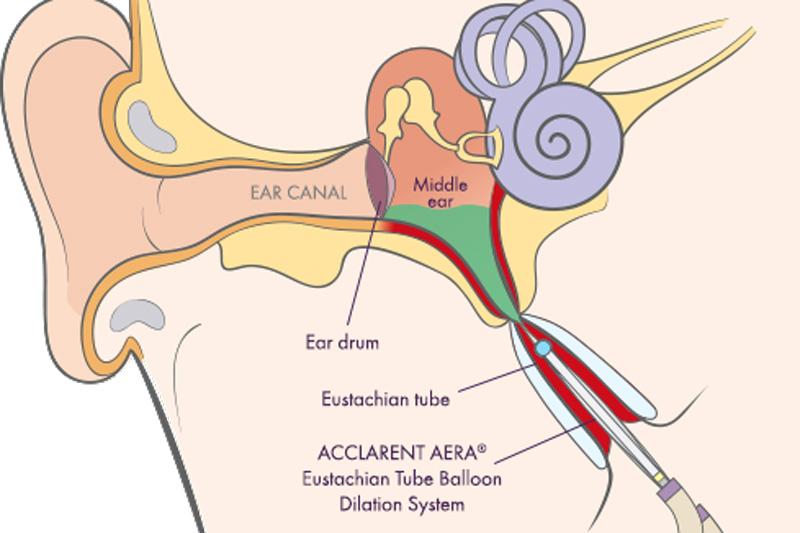ACCLARENT AERA® Eustachian Tube Balloon Dilation
What is Eustachian Tube Dysfunction (ETD)?
The Eustachian tube is a narrow tube linked to the middle ear. It is normally closed but opens when we swallow, yawn, or chew.1 As the Eustachian tube opens and closes, it regulates pressure in the ear. ETD is the failure of the valve of the Eustachian tube to open and/or close properly.2 ETD can cause pressure and pain in the ears, a feeling of fullness or that your ears are clogged or “under water,” or your hearing to feel muffled. Crackling or popping sounds or ringing in the ears are also common symptoms of ETD.
What are the causes of Eustachian Tube Dysfunction (ETD)?
When the lining of the Eustachian tube becomes swollen, this inflammation can narrow or block the tube, resulting in ETD or dysfunction of the tube.
Causes of ETD include:
- Onset of an infectious or inflammatory condition such as an upper respiratory tract infection.1
- Allergic rhinitis or rhinosinusitis, leading to difficulties in pressure equalization, discomfort, and other symptoms. 1
- Deviated nasal septum. 1
- Dysfunction or failure of the muscles associated with Eustachian tube opening. 1
- Other potential risk factors including tobacco smoke, reflux, and radiation exposure. 1
Get Your Life Back
While symptoms of ETD can be mild and may resolve after a few days, persistent ETD (for more than 12 weeks) may not only cause discomfort and limit your hearing, but it can also keep you from enjoying life to its fullest.
The ACCLARENT AERA® Eustachian Tube Balloon Dilation System is the first device in the U.S. indicated to treat persistent Eustachian tube dysfunction (ETD). Eustachian tube dilation is a minimally invasive procedure that inserts and inflates a small balloon in the Eustachian tube to open a narrow or clogged tube.

- Nonsurgical outpatient procedure with a short recovery time; no cuts or incisions required.
- More patients regained normal ear function than with medicine alone. 4
- Improvement in Quality of Life Scores compared to medical management alone. 4
Find Out If You Are a Candidate
To find out, download the Eustachian Tube Dysfunction Patient Questionnaire. After you’ve filled out this survey, schedule an appointment with one of our ENT specialists with Quincy Medical Group’s Ear, Nose, and Throat (ENT) department to discuss the results and your specific symptoms.

